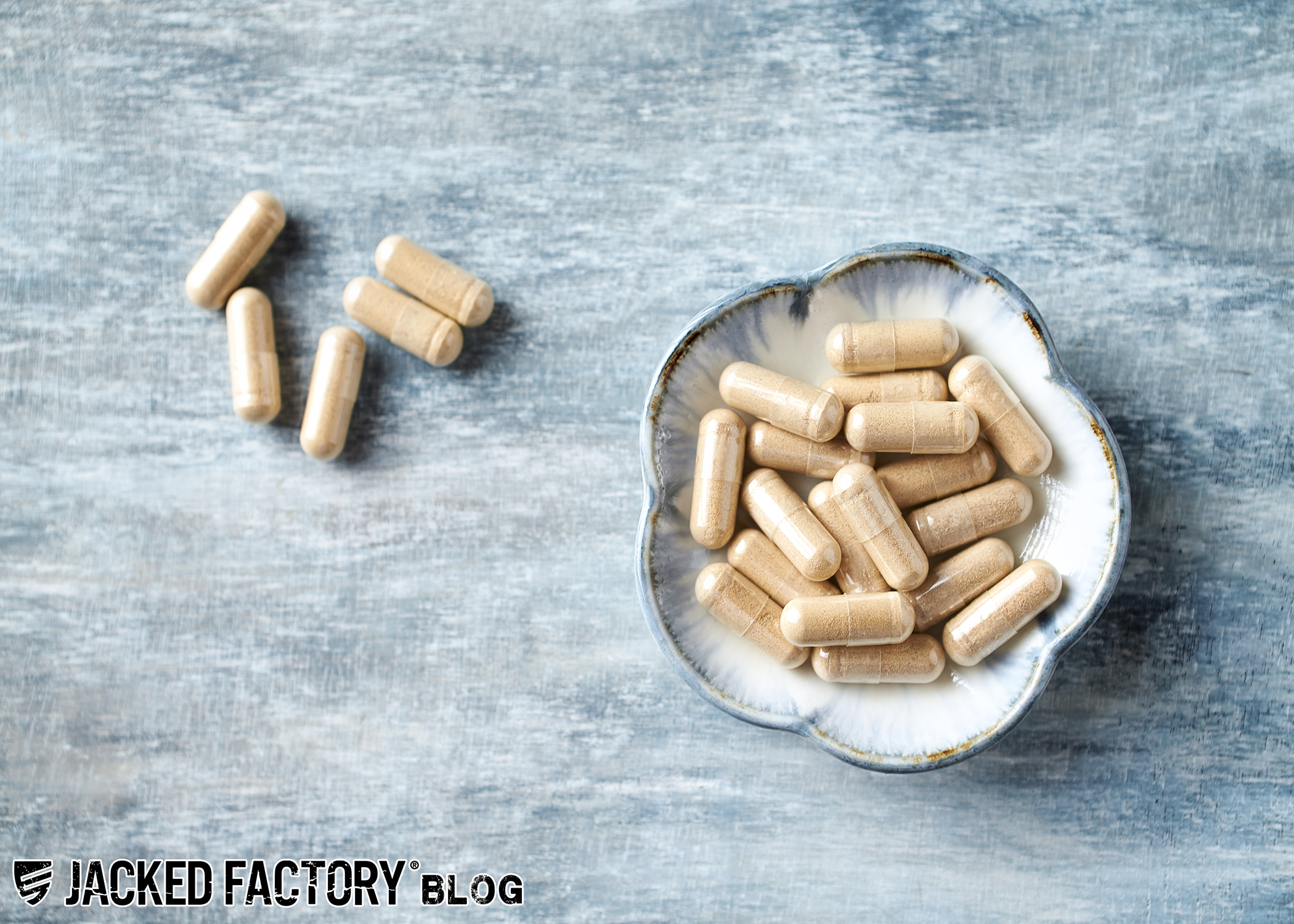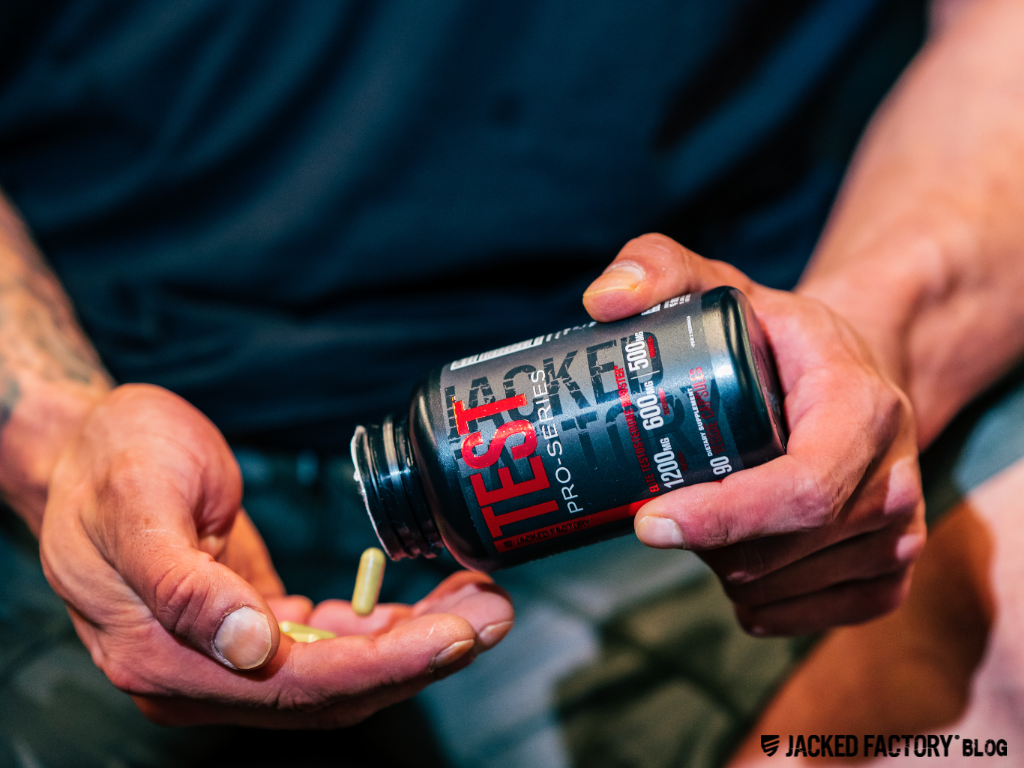5 Natural Ways to Boost Testosterone: Tips for Aging Men
Most people are aware that menopause — low estrogen and progesterone — is a completely normal biological process in aging women. But what if we told you the same thing happens with testosterone levels in men as they grow older?
Well, it does! Some experts refer to the age-related decline of testosterone as “andropause” for this reason.
In fact, an otherwise healthy adult male may lose 5% or more of his natural testosterone production per year by the age of 30 [1]. While it's common for sex hormone production to wane as part of the aging process in adults, there are several natural ways to boost testosterone levels throughout our 30s, 40s, 50s, and beyond.
Read on and we'll detail why testosterone is such an important hormone for men and how you can increase free testosterone levels without the use of testosterone replacement therapy (TRT).
Testosterone: The Male Hormone
Testosterone is the most potent androgen (male sex hormone) in men and women; it’s vital for our overall health and wellness, especially throughout adulthood. The primary female sex hormone is estrogen (estradiol), which we will discuss briefly in this article as it also plays a role in boosting free testosterone levels.
For now, let's focus on why testosterone is so important for men.
Androgens influence the development of male traits directly. Examples of such traits include facial/body hair growth, increase in muscle mass, broadening of the shoulders and chest, and deepening of vocal tone.
Most androgens in the body are also anabolic hormones, meaning they promote the growth of body tissues, such as skeletal muscle. Intuitively, increasing testosterone levels can have profound effects on athletic performance by bolstering strength and muscle growth (assuming you hit the gym, train hard, and eat right).
On the contrary, when a man has low testosterone levels, he quite literally becomes less masculine - psychologically and physiologically.
Masculinity and Testosterone
Masculinity is a social construct that has been conserved throughout primate evolution. For example, studies have found positive correlations between serum testosterone levels and group dominance in male non-human primates [2, 3]. Research has also identified a similar correlation between men with higher levels of testosterone and displaying “alpha” (read: masculine) characteristics [4, 5].
Naturally, men with more testosterone are biologically programmed to take matters into their own hands and grab life by the horns, so to speak. Some people refer to this phenomenon as the “male alpha drive,” which is a reference to the leader of a wolf pack.
In other words, testosterone plays an important role in traits such as confidence, leadership, and dominance. As you can imagine, having high testosterone paid dividends for men during early human times when the main goal was to procreate, which often meant there was direct competition to mate with females.
Chances are you’ve felt that extra jolt you get at the gym when there are women you find attractive working out nearby. This phenomenon is a classic example of your testosterone (and oxytocin) kicking in to get your competitive juices flowing.
Of course, the “primal male” aspects of testosterone are just generalities; not all men with high testosterone are “dominant” and have Greek god-like physiques.
Nevertheless, testosterone levels are positively associated with motivation, determination, confidence, libido, energy, muscle mass, strength, and quality of life in men [6].
Total and Bioavailable Testosterone Levels by Age: What's the Normal Range?

There has been considerable controversy over what the true "normal range" is for testosterone levels as we age. Thus, depending on the lab or clinic that does your blood work, the reference range they provide may be markedly different from another.
Recent population-level data makes it clear that there is significant variance in total and bioavailable testosterone levels among aging men [7]. In other words, a "healthy" testosterone level for one man might be significantly lower or higher for another of the same age.
That's why it's essential to go by both your symptoms and lab work. The more information you can integrate into your hormone assessment, the better. Here's a shortlist of low testosterone symptoms:
- Lack of sex drive (low libido)
- Unexplained loss of muscle mass
- Increase in body fat
- Development of breast tissue (gynecomastia)
- Erectile dysfunction (impotence)
- Shrinking testes
- Infertility
- Chronic fatigue
- Feeling like you can’t get enough sleep
- Mood disorders (e.g. depression and anxiety)
- Inability to concentrate (brain fog)
- Loss of body and pubic hair
- Low red blood cell count (anemia)
If you're experiencing some (or all) of the symptoms above, getting your total and free testosterone levels checked is prudent. A lab test is the only way to confirm if your testosterone levels are within the normal range.
With that in mind, research suggests that 95% of apparently healthy men between the ages of 40 to 80 will have a total testosterone level between 156 ng/dL and 914 ng/dL [8]. The normal free testosterone level for the same age group appears to be between 2.21 ng/dL and 26.28 ng/dL.
Simple Ways to Increase Free Testosterone

Nutrition is just one piece of the testosterone-boosting puzzle. Multiple other factors contribute to endocrine function, and seemingly mundane daily habits can suppress your body’s natural hormone production if you’re not careful. Here are some evidence-based tips to ensure your lifestyle doesn't contribute to low testosterone levels:
Pump Some Iron
Many men and women find themselves stuck behind a computer for 8+ hours per day. Sure enough, a sedentary lifestyle is one culprit of low testosterone levels [9]. Doing the opposite — exercising regularly (especially resistance training at a high intensity) — boosts your free/bioavailable testosterone [10].
You don't have to train balls to the wall seven days a week, either. As few as three 45-60 minute resistance-training workouts per week can have profound impacts on your natural hormone production. The key is consistency and continual progression when you're in the gym.
Less Alcohol, More Test
We realize alcohol is the social beverage of choice for most adults. But drinking frequently and excessively is well-known to inhibit muscle growth and lower testosterone levels in men [11, 12].
Interestingly, acute consumption of small amounts of alcohol may actually increase testosterone, according to one study [13]. The catch is that the subjects were given a very low dose of alcohol (roughly half the amount of ethanol found in a 12-oz can of beer). And let’s be honest, no man goes out for a night on the town just to drink half a beer.
Bottom line: Limit your alcohol intake to 1-2 drinks per week (or cut it out altogether).
Dream Your Way to Higher Testosterone Levels
Not sleeping enough is a major no-no if you’re trying to boost testosterone levels naturally. In fact, a recent study in healthy young men found that a mere week of sleep deprivation — less than 5 hours per night — reduced testosterone levels by an average of 15% (not to mention, their “vigor” plummeted) [14].
Okay, so the solution is to sleep as much as possible, right? Well, not quite...
Oversleeping can have similar health ramifications as sleep deprivation. Ideally, you should aim for seven to nine hours of sleep per night for optimal health and boosting testosterone [15].
As we age, sleep requirements decrease ever-so-slightly. Older men (e.g. 50+ years) might be able to “get away” with six hours of sleep per night. Middle-aged men, however, typically require at least seven hours per night, but no more than nine.
Regardless of how busy you are and all the responsibilities you have to worry about, you can set aside adequate time for sleep. If not, you should seriously reevaluate your priorities.
Get Outside More
It comes with the territory of most jobs to be stuck inside all day. Sadly, we may go days at a time without seeing the sun, which can dramatically affect testosterone levels and mood.
The ultraviolet rays of the sun are Mother Nature’s way of activating vitamin D found in the skin. Ever heard of the “winter blues”? Well, it’s more or less a direct result of insufficient sun exposure during the colder months, and vitamin D deficiency is associated with mood disorders like depression [16].
On the flip side, men with higher vitamin D levels typically have higher testosterone levels [17]. Never take a breath of fresh air for granted. Get outside and embrace the sunshine for at least 20-30 minutes per day, if not more.
Last, But Not Least: Grab a Bottle of Pro Series Test!

Pro Series Test is a clinically dosed 3-in-1 natural hormone-optimizing supplement designed to increase bioavailable testosterone levels while controlling estrogen and cortisol production. This formula packs a dream-team lineup of premium ingredients, such as LJ100® Eurycoma longifolia extract, KSM-66® organic ashwagandha extract, TestoFen® fenugreek extract, and PrimaVie® shilajit extract.
Lay the foundation for lean muscle building, fat burning, strength, confidence, virility, and overall vitality. Pro Series Test is ushering in a new era of "natty test boosters" — buckle up and grab a bottle before it's gone!




Leave a comment
All comments are moderated before being published.
This site is protected by hCaptcha and the hCaptcha Privacy Policy and Terms of Service apply.